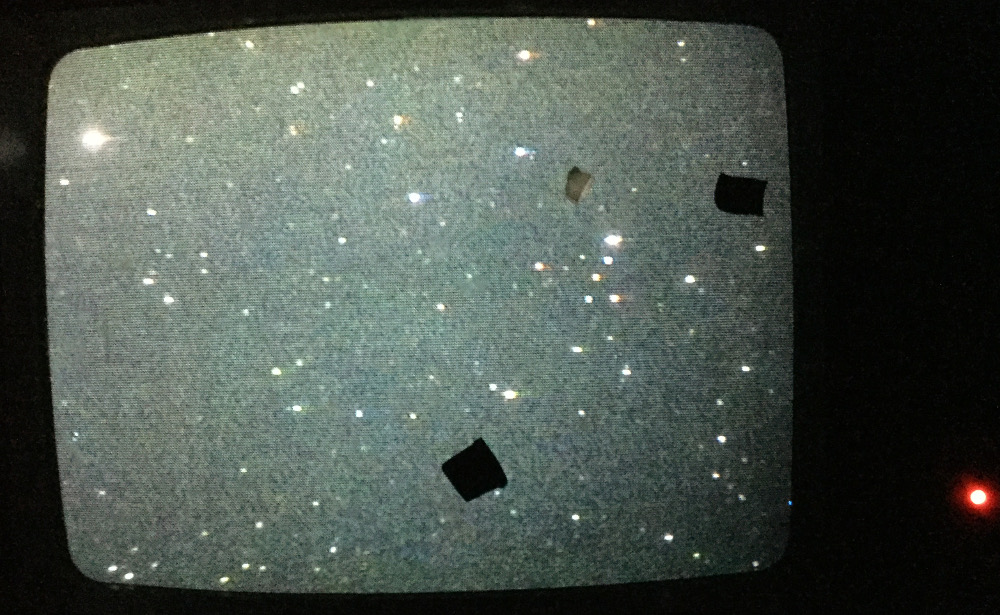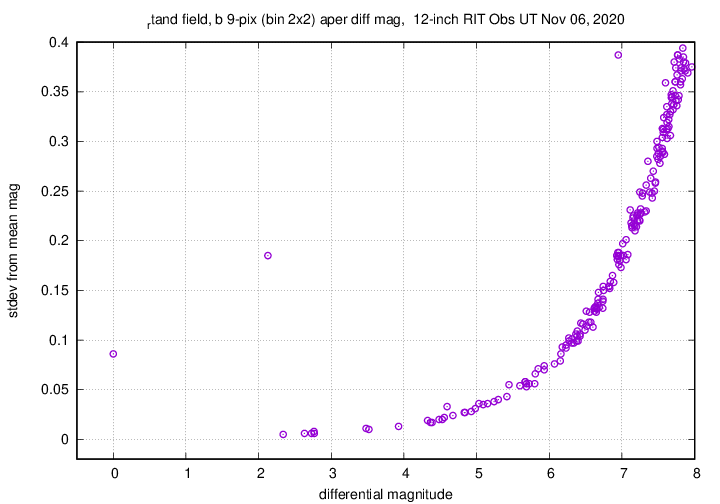
On the night of Nov 06/07, 2020, under good conditions, I acquired B-band and R-band images of the eclipsing variable star RT And, which one of my capstone students will analyze. I caught one eclipse near the end of the run.
The other star in the field which I suspect to be an eclipsing binary showed no variations ...
You can find some basic information on this star at the SIMBAD's page for it.
The main setup was:
Notes from the night:
The object is at
RA = 23 11 17.9 Dec = +52 59 59.2 (J2000)
A chart of the field based on pictures tonight is shown below. The size of the chart is about 38 x 26 arcminutes.

The stars "A", "B", and "C" appear in the charts and tables for this field made by the AAVSO. see
I used the star labelled A = "102" to shift my measurements to the "B" magnitude scale. It has B = 10.336. It also has magnitude r = 10.127 according to the APASS catalog.
Here's a picture of the TV with the finder's field of view when pointing at RT And:

The dark current was normal this evening:

The sky value shows that the sky suffered a short period of light cloud early, periods of clouds. The low point is when I closed the slit to move the panel to the top of the dome.

The number of objects detected.

I used an aperture of 9 pixels for photometry.

Using aperture photometry with a radius of 9 pixels (binned 2x2, each pixel is 1.25 arcsec, so a radius of 11.25 arcsec), I measured the instrumental magnitudes of a number of reference stars and the target. Following the procedures outlined by Kent Honeycutt's article on inhomogeneous ensemble photometry, I used all stars available in each image to define a reference frame, and measured each star against this frame.
Sigma-vs-mag plots show that the floor was about 0.006 mag in B with 10-second exposures. I marked all the bright stars as possible variable.

The outliers in the photometric solution are due to my adjustments of the dome slit.

Last modified 11/7/2020 by MWR.